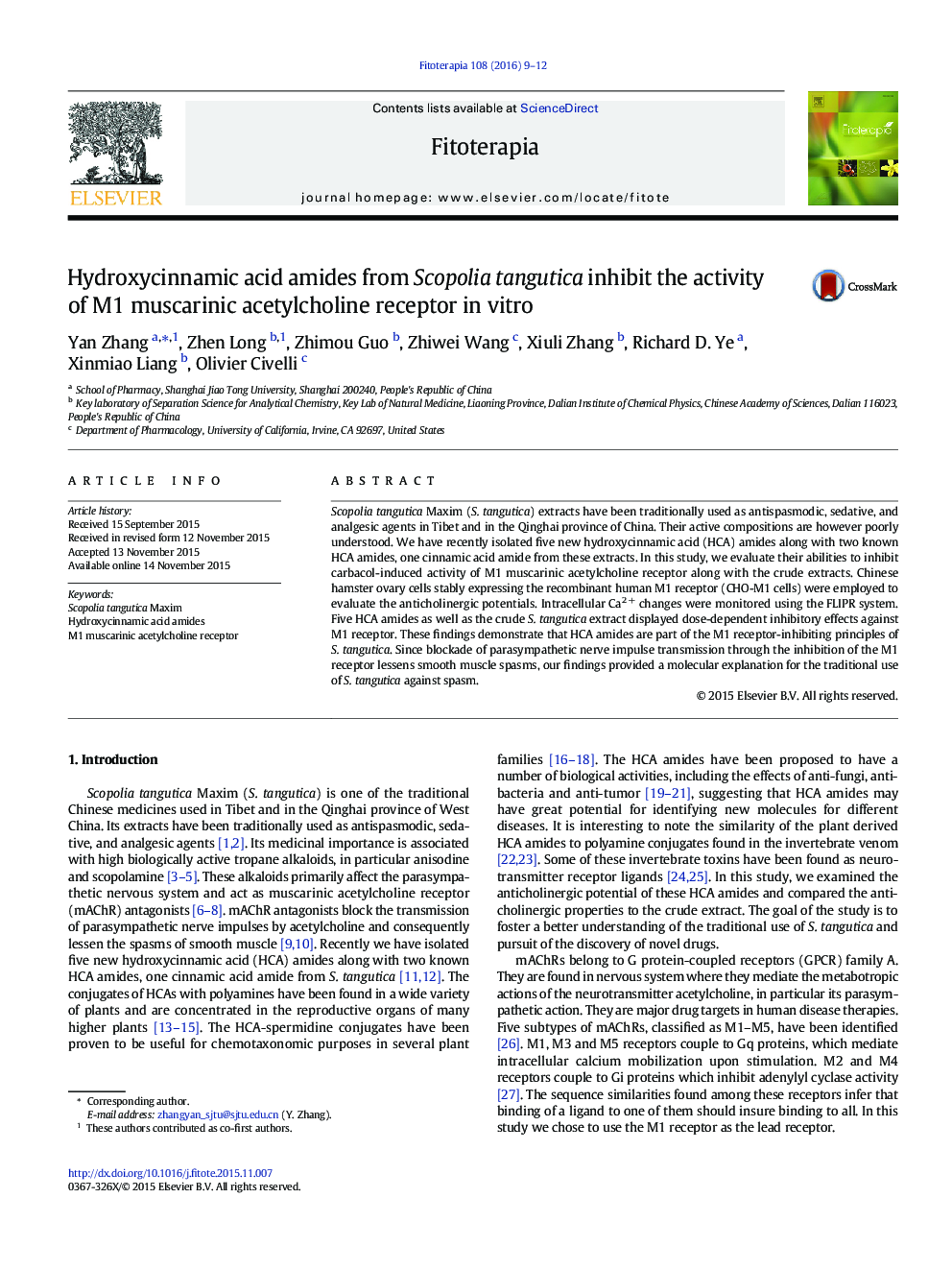| Article ID | Journal | Published Year | Pages | File Type |
|---|---|---|---|---|
| 2538234 | Fitoterapia | 2016 | 4 Pages |
Scopolia tangutica Maxim (S. tangutica) extracts have been traditionally used as antispasmodic, sedative, and analgesic agents in Tibet and in the Qinghai province of China. Their active compositions are however poorly understood. We have recently isolated five new hydroxycinnamic acid (HCA) amides along with two known HCA amides, one cinnamic acid amide from these extracts. In this study, we evaluate their abilities to inhibit carbacol-induced activity of M1 muscarinic acetylcholine receptor along with the crude extracts. Chinese hamster ovary cells stably expressing the recombinant human M1 receptor (CHO-M1 cells) were employed to evaluate the anticholinergic potentials. Intracellular Ca2 + changes were monitored using the FLIPR system. Five HCA amides as well as the crude S. tangutica extract displayed dose-dependent inhibitory effects against M1 receptor. These findings demonstrate that HCA amides are part of the M1 receptor-inhibiting principles of S. tangutica. Since blockade of parasympathetic nerve impulse transmission through the inhibition of the M1 receptor lessens smooth muscle spasms, our findings provided a molecular explanation for the traditional use of S. tangutica against spasm.
Graphical abstractFigure optionsDownload full-size imageDownload high-quality image (436 K)Download as PowerPoint slide
